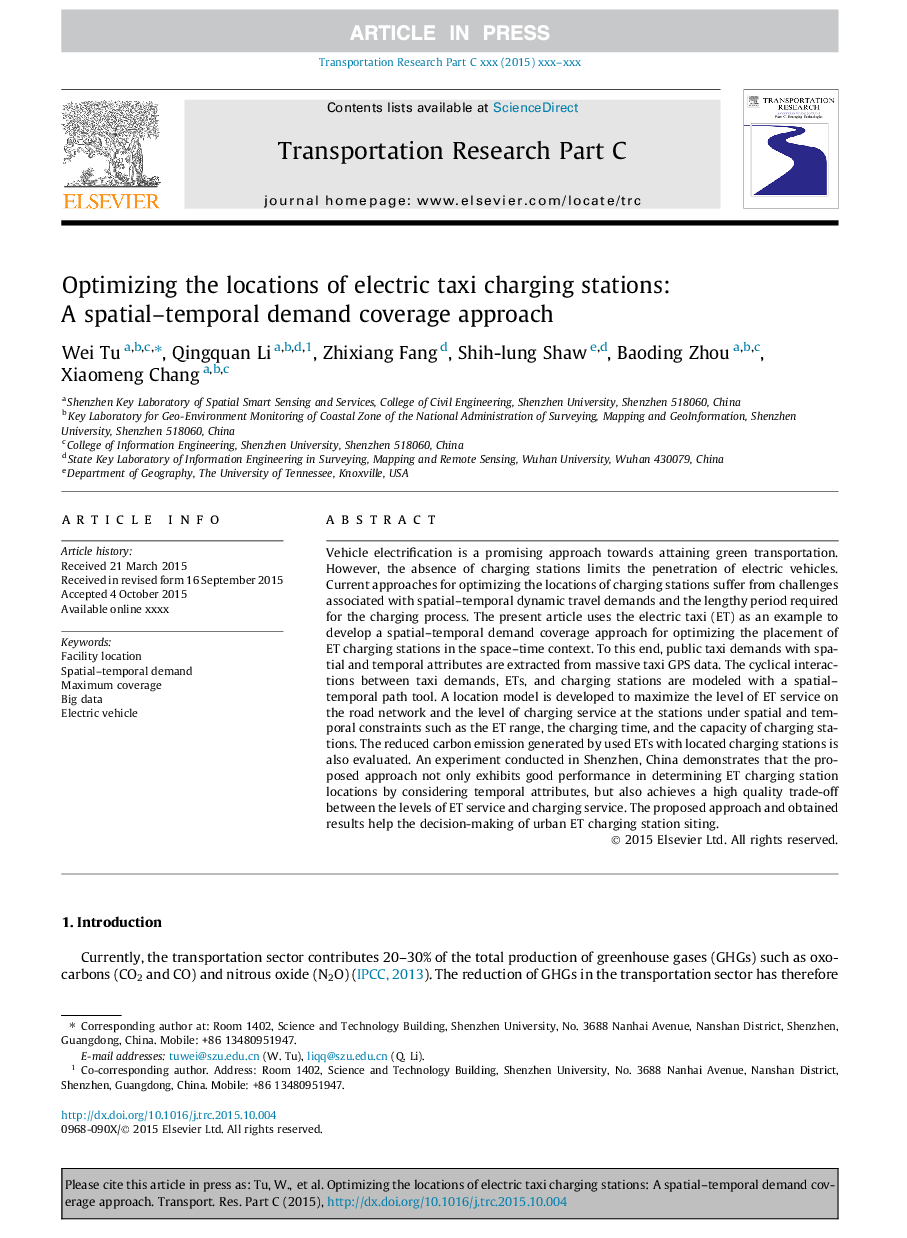| Article ID | Journal | Published Year | Pages | File Type |
|---|---|---|---|---|
| 6936518 | Transportation Research Part C: Emerging Technologies | 2016 | 18 Pages |
Abstract
Vehicle electrification is a promising approach towards attaining green transportation. However, the absence of charging stations limits the penetration of electric vehicles. Current approaches for optimizing the locations of charging stations suffer from challenges associated with spatial-temporal dynamic travel demands and the lengthy period required for the charging process. The present article uses the electric taxi (ET) as an example to develop a spatial-temporal demand coverage approach for optimizing the placement of ET charging stations in the space-time context. To this end, public taxi demands with spatial and temporal attributes are extracted from massive taxi GPS data. The cyclical interactions between taxi demands, ETs, and charging stations are modeled with a spatial-temporal path tool. A location model is developed to maximize the level of ET service on the road network and the level of charging service at the stations under spatial and temporal constraints such as the ET range, the charging time, and the capacity of charging stations. The reduced carbon emission generated by used ETs with located charging stations is also evaluated. An experiment conducted in Shenzhen, China demonstrates that the proposed approach not only exhibits good performance in determining ET charging station locations by considering temporal attributes, but also achieves a high quality trade-off between the levels of ET service and charging service. The proposed approach and obtained results help the decision-making of urban ET charging station siting.
Related Topics
Physical Sciences and Engineering
Computer Science
Computer Science Applications
Authors
Wei Tu, Qingquan Li, Zhixiang Fang, Shih-lung Shaw, Baoding Zhou, Xiaomeng Chang,
